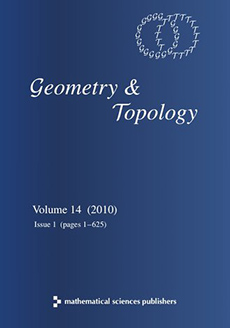Abstract
The ropelength problem asks for the minimum-length configuration of a knotted diameter-one tube embedded in Euclidean three-space. The core curve of such a tube is called a tight knot, and its length is a knot invariant measuring complexity. In terms of the core curve, the thickness constraint has two parts: an upper bound on curvature and a self-contact condition.
We give a set of necessary and sufficient conditions for criticality with respect to this constraint, based on a version of the Kuhn–Tucker theorem that we established in previous work. The key technical difficulty is to compute the derivative of thickness under a smooth perturbation. This is accomplished by writing thickness as the minimum of a –compact family of smooth functions in order to apply a theorem of Clarke. We give a number of applications, including a classification of the “supercoiled helices” formed by critical curves with no self-contacts (constrained by curvature alone) and an explicit but surprisingly complicated description of the “clasp” junctions formed when one rope is pulled tight over another.
Citation
Jason Cantarella. Joseph H G Fu. Robert B Kusner. John M Sullivan. "Ropelength criticality." Geom. Topol. 18 (4) 1973 - 2043, 2014. https://doi.org/10.2140/gt.2014.18.1973
Information





